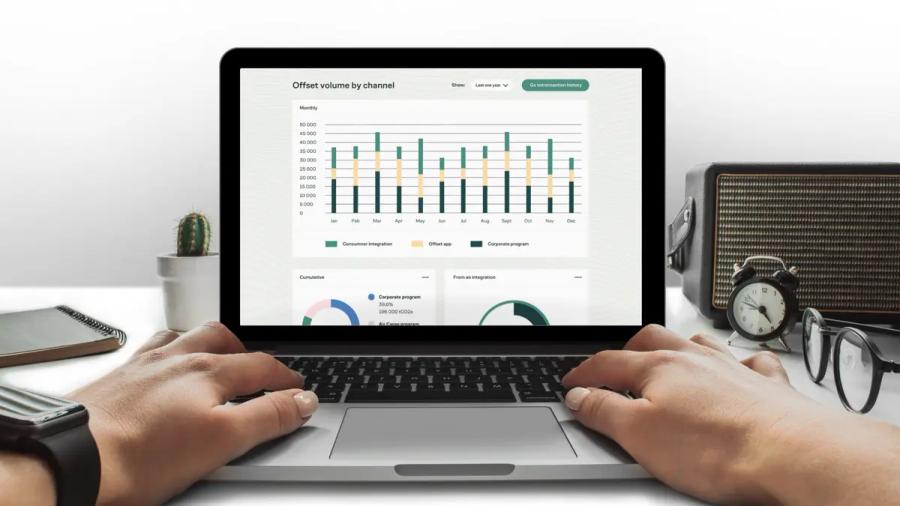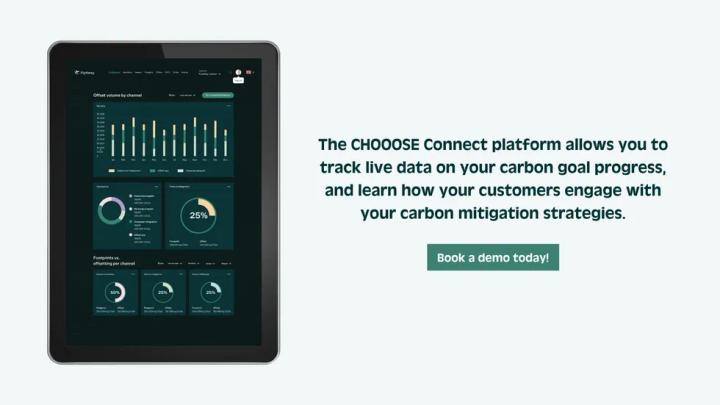Everything you need to know to get started with ESG reporting
March 10, 2022
Resources
ESG enters the mainstream
As public scrutiny of companies intensifies in the age of the 24-hour news cycle and constant social media coverage, boards are under increasing pressure to justify and defend their corporate decisions. Companies are under increasing pressure to be ethical and accountable—alongside turning a profit.
Enter: Environment, Social, and Governance (ESG) criteria, a way for companies to bolster their social impact image in the eyes of the public, attract investors, and gain an edge over their competitors. Documenting ESG performance in reports is a way for companies to monitor their progress in meeting social impact-related objectives.
Prove your commitment to sustainability
Reporting ESGs is an effective way for companies to demonstrate their commitment to sustainability. It’s an organization’s opportunity to showcase the drive and legitimacy of their ESG agenda. It’s how they prove to the world they are not making empty promises or simply paying lip service.
This article walks you through everything you need to know about ESG, but before we can get into defining the processes involved in ESG compliance, let’s cover some basic ground about ESG: what is ESG? Why does it matter? How do you get started with ESG reporting?
Ready to superpower your company’s progress toward your sustainability goals? The CHOOOSE Connect platform features the most credible climate solutions and important reporting assets you will need to support and elevate your ESG strategy. Click here to get started!
The ABCs of ESG
‘E’ is for Environment
The ‘E’ in ESG relates to everything environmental: climate change, pollution, waste, natural resources, sustainability trends, and opportunities.
Climate change’s impacts on resources and entire ecosystems are regarded as serious threats to global business, and companies are now actively seeking to respond to and transform their operational supply chain to meet the myriad of challenges at hand.
Investors, customers, and employees are increasingly interested in understanding what kind of impact a company has on its environment. This can include a company’s total carbon footprint which includes Scope 1, 2, and 3 emissions, their sustainability efforts, and ecological liabilities that make up its existing supply chain.
What are Scope 1, 2, and 3 carbon emissions?
A company’s greenhouse gas emissions are divided into three categories: Scope 1, 2, and 3.
- Scope 1 emissions are ‘direct emissions’, which includes any transportation-generated emissions.
- Scope 2 emissions are ‘indirect emissions - owned’, which includes company consumption of electricity, water, heat, etc.
- Scope 3 is ‘indirect emissions - not owned’, which includes everything from employee commuting to office furniture to disposal of waste generated in operations. Generally, the majority of business emissions come from Scope 3.
It’s important to measure all three scopes of a company’s carbon footprint.
CHOOOSE works with global brands to monitor their progress toward Scope 1, 2, and 3 goals and bring their sustainability objectives to life—without sacrificing customer experience. Are you looking to offer climate integration as part of your customer flow? Book a CHOOOSE Connect demo here.
‘S’ is for Social
The social element in ESG addresses everything from inclusion programs, hiring practices, LGBTQ+ equality, and racial diversity in both the executive suite and staff overall. It also accounts for how a company advocates for social civic good in the wider world, beyond its business operations.
The central question behind the ‘S’ in ESG investing is: how does the company improve its social contract, both within the company and in the broader community? How can a company manage its relationships with its workforce, the societies in which it operates, and the political environment?
Last but not least, ‘G’ is for Governance.
Governance includes issues surrounding how the company is governed, including executive pay, diversity in leadership, policies on bribery and corruption, and how well that leadership responds to and interacts with shareholders.
Governance speaks to the framework of authority and accountability. It’s about how the company’s board and management display effective leadership and drive positive change. How transparent is a company? How much decision-making power do shareholders have?
This facet of company culture is being prioritized because institutional and private investors, focused on good corporate governance, are attracted to companies that include a balanced number of board members and a strong board composition.
Why are ESG important?
Ultimately, for many people, ESG goes beyond the three-letter acronym to address how a company serves all its stakeholders: employees, communities, customers, investors, and the environment.
Identifying the impact—positive or negative—that a company’s operations have on their stakeholders allows companies to stay accountable to them.
Looking to integrate carbon compensation directly into your booking flows, e-commerce checkout, or consumer applications? Securely integrate CHOOOSE Connect APIs and begin offering voluntary carbon compensation options to your customers.
Do investors care about ESG?
Companies are also realising how important ESG are to investors, who increasingly see ESG as a measuring stick to a company’s overall performance. ESG are regularly used as a way to reassure investors and to see if a company is aligned with similar values before they invest.
Investors often use data from ESG reports to screen investments and avoid companies that damage the environment or pose a risk to their reputation on any level.
Interested in attracting new investment? ESG reporting can help. Our partners in CHOOOSE Connect have instant access to impact reports, programme performance, certificates, and other material for reporting and marketing.
What is ESG reporting?
ESG reporting is fast becoming a necessary segment of a company’s regulatory responsibilities. Since July 2020, about 90% of the companies in the S&P 500 have already created annual ESG reports and made it standard practice.
ESG reporting allows investors, customers and employees to identify the strengths and sustainability profile of the company itself. ESG reports contain summaries of quantitative and qualitative information and are complemented by a performance analysis in the E, S, and G areas to provide stakeholders with an insight into the goals, achievements, and impact of the business.
Simply put: ESG reporting is the disclosure of ESG data.
Companies taking a leadership position on climate and social issues stand to strengthen their credibility and status amongst their customers, employees, policymakers, and campaign groups by improving transparency. With half of the global consumers believing climate change will negatively impact their lives, a proactive approach helps increase brand integrity, profitability, and competitiveness.
Social responsibility is in. Greenwashing is out.
The framework surrounding ESG reporting is fast becoming more sophisticated, more legitimate, and more thoughtful. As such, ESG disclosure processes are evolving to meet the significant shift in awareness and priorities.
With companies facing increased and explicit public demands and regulations, rapidly-evolving standards and expectations are emerging. ESG reporting can help your business drive transparency and clarify corporate positions.
How to get started with ESG reporting
Is your company ready to join a global movement in transparency, accountability, and progress toward the global challenges we face? ESG reporting is a great first step. Here’s how you can quickly start working on your ESG reports:
Strategize
Outline your ESG strategy. Engage all company stakeholders to understand what is most important to them and how these priorities align with your business. Use this opportunity to define all your short term and long term strategies. Remember to stay flexible, these may change along the way.
Get more specific. Following that, the company will need to define its metrics, goals, and targets, and a reporting standard to follow. A lot of times companies will create their own key performance indicators (KPIs) because the commitments they have set don’t necessarily align with the reporting standards available. ESG standards and frameworks are helpful to provide comparability across companies but measuring a different set of indicators internally to track performance is commonplace.
Evaluate
In this second phase, companies should look at current processes and procedures to determine if they have relevant policies in place and evaluate their effectiveness. During this phase, it’s also important to be thinking about technology and how you can utilize it to create efficiencies, extract quality data, and facilitate transparency throughout the process.
Legal guidelines, public attention, and stakeholder interest in ESG has driven companies to accelerate their environmental strategies. Maintaining and ensuring transparency is a key part of this equation.
Design and implementation
Collect all ESG-related information that is available across different departments and stakeholders to ensure that there are no gaps in the data collection process.
During this phase, companies generally try to figure out how to connect ESG with financial reporting. The design phase is also where you want to determine and finalize which strategies might require different policies and procedures.
Continuous monitoring
Once a company begins collecting ESG data, they need to continuously monitor its progress. Companies will need evidence to support audit trails or certifications.
Companies need to prove that they have followed set procedures, which is why an audit and certification process is common—and may even be required, depending on the business location and other factors.

Assurance
Lastly, assurance refers to the process that ensures a company’s ESG report meets certain standards. Assurance helps stakeholders to rely on the information in ESG reports. Some companies publish ESG reports based on their own data and analysis, while some use third parties to create the report or assess and certify its content.
CHOOOSE helps our partners find the resources they need to report on and communicate your impact. See how some of our partners use CHOOOSE’s platforms to accelerate their ESG progress.
Are you ready to get started in ESG reporting?
ESG reporting is not as scary and complicated as it may seem, especially when you’re equipped with the right tools.
The transition to carbon neutrality is long, and requires the participation of businesses at every level in every sector. Together, we can make great strides toward sustainability.
Are you looking for a self-serve carbon management solution? Check out WeCHOOOSE, allowing your business to easily calculate, track and offset its carbon footprint by supporting high-impact climate projects, all in one place.
POLICIES
PRODUCTS